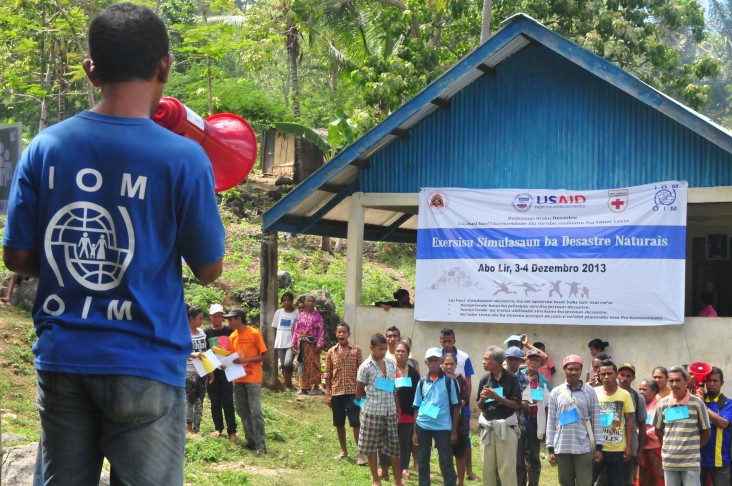Speeches Shim
|
Purpose: To support sustainable preparedness strategies that increase the resilience of vulnerable communities in Timor-Leste and empower them to independently cope with and respond to natural disasters and the effects of climate change |
Location: Baucau, Bobonaro, Ermera, Manatuto, and Lautem municipalities |
|
Partner: The International Organization for Migration (IOM) |
Duration: January 2014 – December 2017 |
|
Cooperative Agreement: $1.5 million |
|
|
Partner Contact: Office in Charge Email: AHARRINGTON@iom.int |
USAID Contact: Flavia da Silva Director, Economic Growth Office Email: mahenderson@usaid.gov |
Background:

Timor-Leste is exposed to natural hazards, including flooding, drought, typhoons, wave surges, earthquakes, and tsunamis. Climatologists project that the weather in the region is likely to become hotter and dryer, leading to droughts, heavy and erratic rainfall, and flooding. The low-lying atolls within the region are also highly susceptible to climate change phenomena such as rising sea levels, coastal erosion, and coral bleaching. There is now substantial evidence to indicate that the changes in weather conditions associated with climate change will increase the likelihood and intensity of recurrent natural disasters throughout the country. The country experiences cyclical effects of the El Niño/Southern Oscillation (ENSO)-related weather anomalies. Floods have resulted in decreased agricultural production, damage to infrastructure, displacement of communities, and loss of property and livelihoods, particularly in heavy flood-affected locations. There is a general lack of understanding and awareness of natural hazards, climate change, and disaster preparedness and adaptation within communities.
Key Project Objective:
To support sustainable preparedness strategies that increase resilience of the vulnerable communities in Timor-Leste and empower them to independently cope with and respond to natural disasters and the effects of climate change.
Cumulative Achievements:
- The Building Community Resilience in Timor-Leste Project focuses on five of the country's most disaster-prone municipalities. Working with the Government of Timor-Leste (GOTL), the project uses globally-accepted best practices to assist rural communities in reducing the impact of disasters through training, small grants, and educational inputs. The project supported 38,000 people from these communities.
- At the national and district levels, the project helps concerned officials prepare for sudden emergencies by instituting the common operational response essentials training. Simulation exercises conducted in the districts brought together national and local responders to better understand what could happen during a crisis and develop action plans together.
- Approximately 1,500 local government and community leaders were trained.


Comment
Make a general inquiry or suggest an improvement.